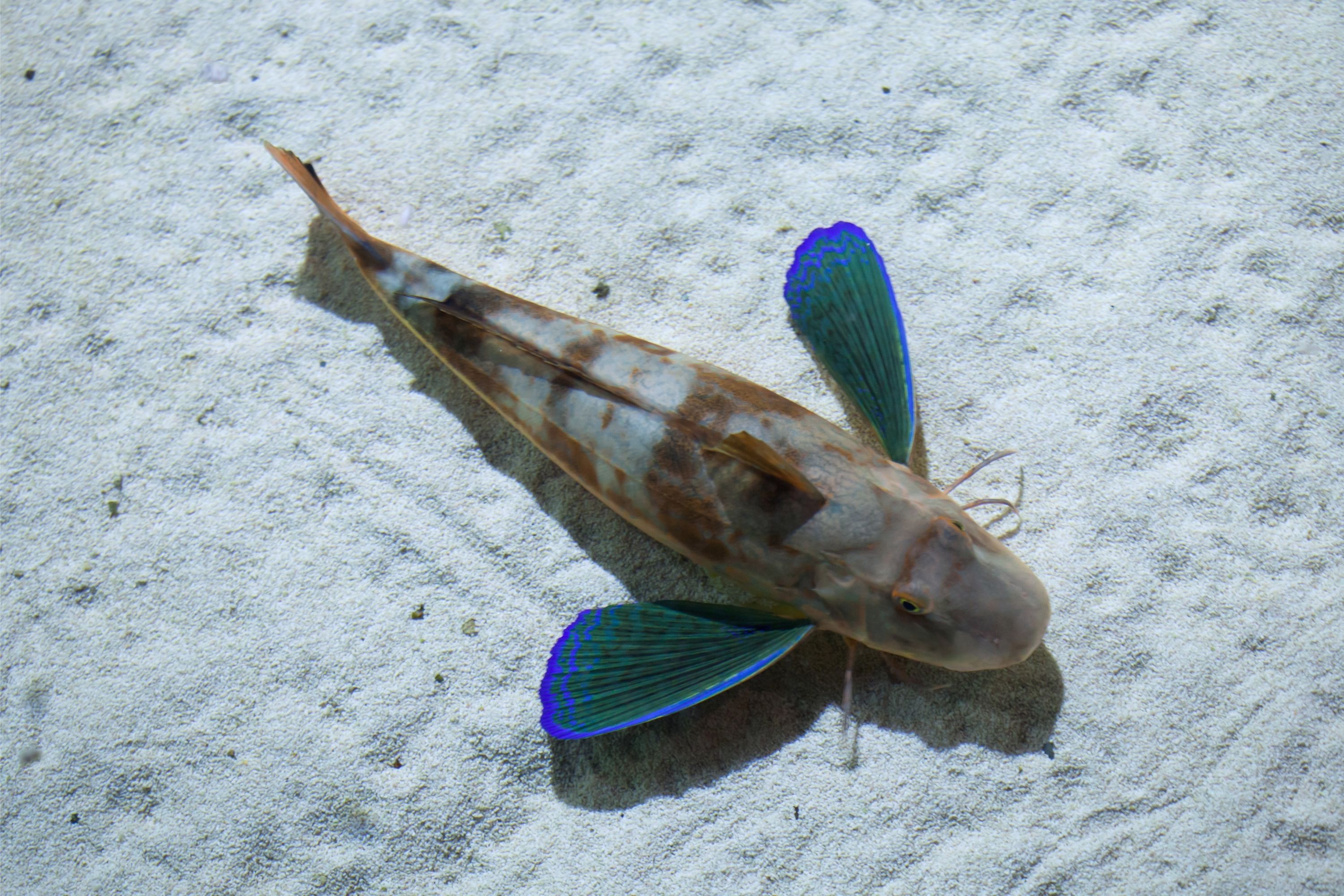Tub gurnard
(Chelidonichthys lucerna)

Description
The tub gurnard (Chelidonichthys lucerna), also known as the sapphirine gurnard, tube-fish, tubfish or yellow gurnard, is a is a species of marine ray-finned fish belonging to the family Triglidae, the gurnards and sea robins. It is found in the eastern Atlantic Ocean. It is exploited by commercial fisheries as a food fish. The tub guranrd has a large, bony, triangular shaped head which bears many ridges and spines but which does not have an occipital groove. There are two spiny lobes on the tip of the snout and the eyes are relatively small. The large mouth is set low on the head and the jaws and vomer are covered by densely set rows of teeth. There are two dorsal fins, the first contains 8 to 10 spines and the second 16 or 17 soft rays. The anal fin has between 14 and 16 soft rays. The cleithral spine is short and is located over the pectoral fin and extends just to the first quarter of the pectoral fin. The pectoral fins, typically for gurnards are large with the innermost three rays free from the membrane, thickened and finger-like, used for locomotion and to detect prey. There are no scales present on the breast and front section of the belly, the body has small, well embedded scales while the scales on the lateral line are small and tubular. The caudal fin is slightly emarginate. This species reaches a maximum total length of 75.1 cm (29.6 in), the largest species in the family Triglidae, although 30 cm (12 in) is more typical. The heaviest published specimen weighed 6 kg (13 lb). The overall colour is deep reddish brown to pinkish red, with a pinkish lower body. The blue pectoral fins are spotted green in the centres and red on the margins. The tub gurnard is found in the Eastern Atlantic Ocean where it occurs from Norway south along the European and African coasts as far south as Ghana. It occurs throughout the Mediterranean Sea and in the Black Sea too. It is absent from Madeira and the Azores but is found around the Canary Islands. This species is found on sand, mud-sand or gravel substrates at depths between 20 and 300 m (66 and 984 ft). During the summer the tub gurnard may spend more time closer to the surface in water as shallow as 10 m (33 ft) and the juveniles can be foun din brackish water in lagoons, estuaries and even the lower reaches of rivers.
Taxonomic tree:







